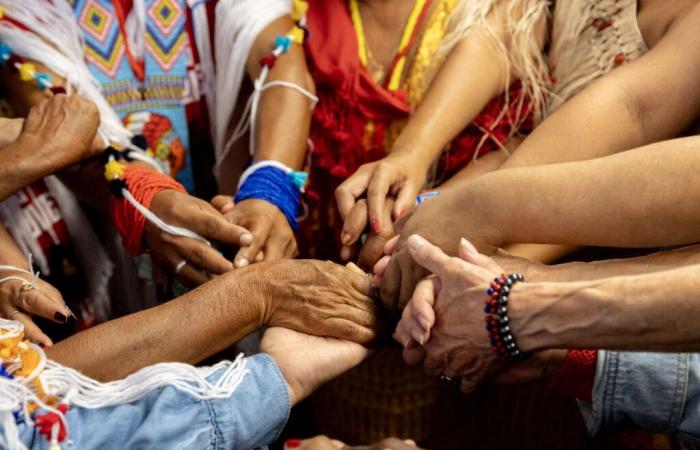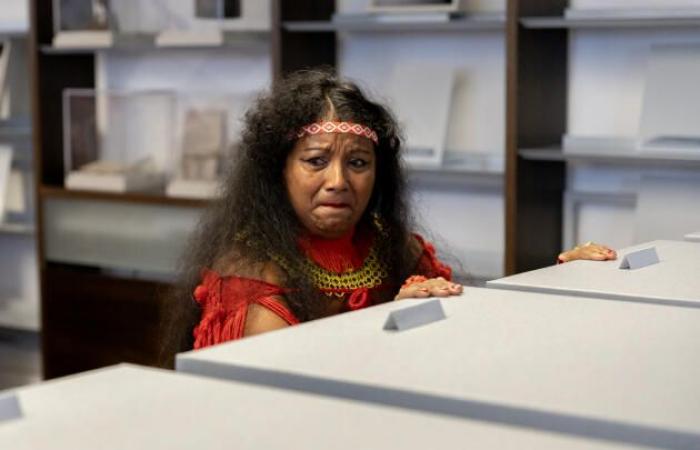Six long gray boxes, with cream-white handles, were lined up on tables covered with a black sheet. In every way similar to coffins, the boxes are made of cardboard, and the ties are made of cotton. In the family room of the Musée de l’Homme, on Tuesday morning, September 17, silence reigns around the remains thus exposed of Pékapé, Couani, Emo-Marita, Mibipi, Makéré and Miacapo. These Kalina Amerindians, kidnapped in Guyana at the beginning of 1892 to be exhibited in Paris, in the human zoos of the Jardin d’Acclimatation, died there of cold before having seen spring. Since then, they were nothing more than objects, in the secrecy of inalienable public collections. This morning, here they are back among the living, for the first time. And we will pray for the appeasement of their souls.
Read also: Article reserved for our subscribers In Guyana, the quest for descendants of victims of Parisian human zoos: “We had deaths, where are they?”
Add to your selections
Coming from Guyana and Suriname for the meeting, a delegation of their descendants arrived in the autumn wind at the Trocadéro. They surrounded a shaman and four traditional chiefs from the villages of Terre-Rouge, Yanou Bellevue, Ayawande (Guyana) and Galibi (Suriname). All wore the a’angsa, the multicoloured shawl of major ceremonies, with which they also covered the shoulders of Aurélie Clemente-Ruiz, the museum director.
“This is a historic day. A spiritual moment. For one hundred and thirty-two years, our elders have not heard the Kalina language. We are happy to be with them.”begins, tears in her eyes, Corinne Toka Devilliers. She gave the name of her grandmother, Moliko, to the association founded in 2021, Moliko Alet + Po, for the return of bodies to the country. “We came with our forces to speak with our ancestors. It is time for them to return home.”adds Cécile Kouyouri, the very first female Kalina customary chief appointed in Guyana in 1997.
“We can no longer avoid this story”
When the delegation and guests, guided by the shaman Reinier Aliamale, sit down in front of the six specially designed boxes for the start of the ceremony itself, the emotion increases. Hand in hand, the Kalina hug each other. Dances and songs help with the meditation, around the cachiri, the traditional drink made from cassava. The words also summon the horrors of colonization. “We can no longer avoid this story. The evidence is there.”intervenes Corinne Toka Devilliers, after having placed some archive portraits on the boxes. “This is how we see them: two women, one with her fetus, four men. The government can no longer keep them in these gray boxes.. »
You have 42.79% of this article left to read. The rest is reserved for subscribers.







